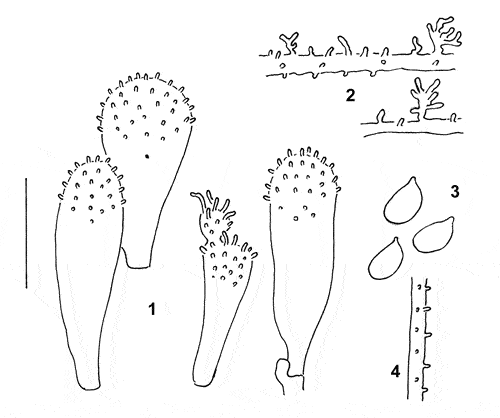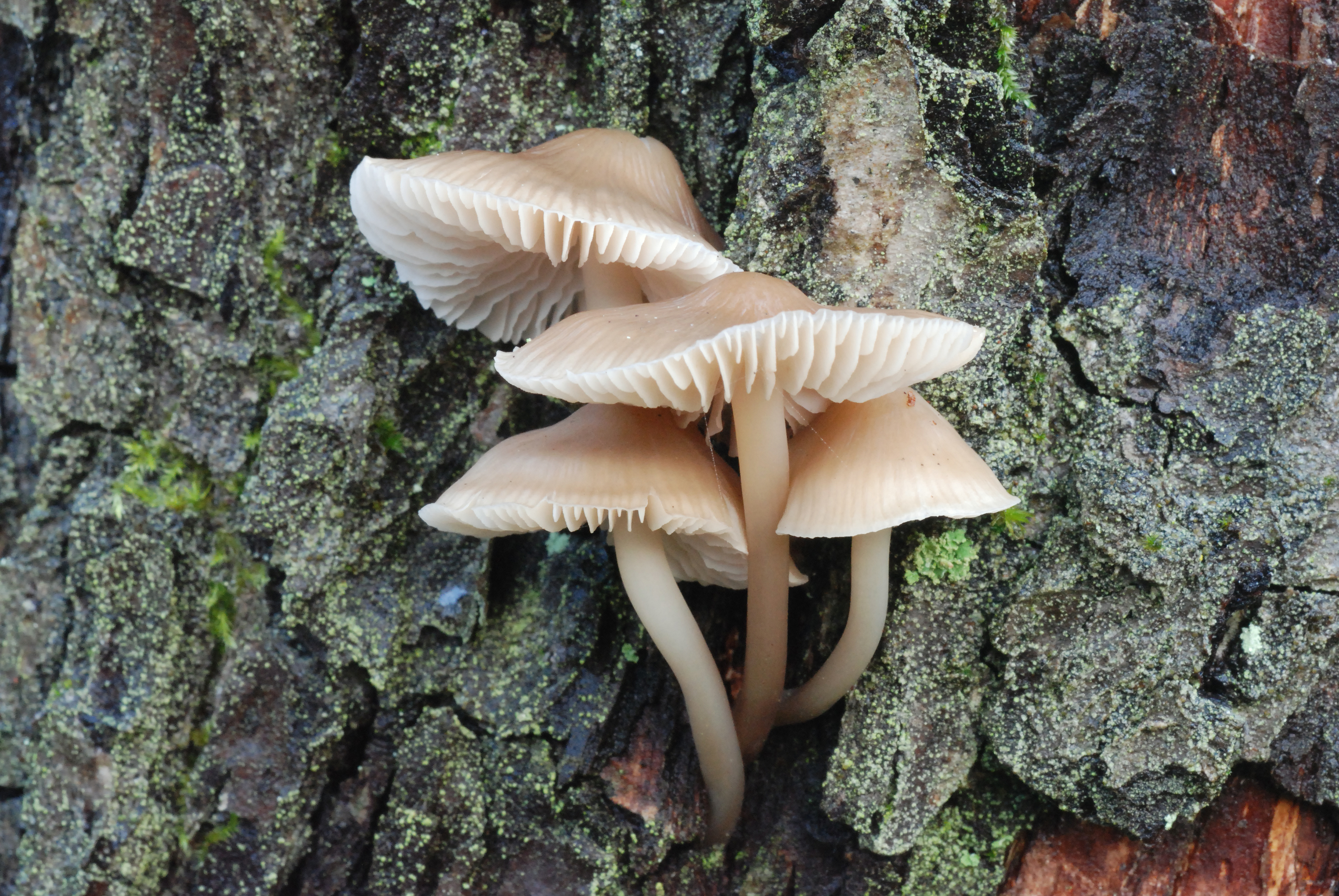Mycena arcangeliana
Mycena arcangeliana
Description
1. Cheilocystidia, 2. Hyphae of the pileipellis, 3. Spores, 4. Hypha of the cortical layer of the stem.
Cap 10-25 mm across, almost cylindrical when very young, then conical to parabolical, flattening with age, becoming almost plane, with or without umbo, sulcate, translucent-striate, hygrophanous, appearing in two colour forms: either a pale, yellowish form with the centre more or less darker and with an olivaceous to sepia brown shade, finally turning pale grey to pale grey-brown, or a darker form which is watery sepia brown to fairly dark grey-brown, darker at the centre and often with some olivaceous shade, paler at the margin which often shows a yellowish shade. Odour indistinctive, but of iodoform on drying out. Gills 16-30 reaching the stem, ascending, adnexed, dorsally intervenose with age, pale citrine to pale sulphur or pale grey-beige to whitish, often with a pinkish tinge. Stem 25-100 x 1-3 mm, cylindrical, smooth to very finely rugulose-fibrillose, entirely pruinose, glabrescent for the greater part except at the apex, at first pale violaceous grey, turning pale grey to pale grey-brown, with the apex whitish and the base long retaining violaceous shades (pale forms); or at first bluish grey, fairly pale bluish violet to steel blue, with age turning grey to sepia brown (dark form); the base covered with long, coarse, flexuous, whitish to yellowish fibrils. Basidia 25-35 x 6.5-9 µm, clavate, 4-spored. Spores (7-)8-9 x 4.5-5 µm, Q = 1.5-1.9, Qav ˜ 1.7, pip-shaped, smooth, amyloid. Cheilocystidia 17-65 x 7-24 µm, forming a sterile band, clavate to obpyriform, more rarely almost globose or somewhat irregularly shaped, covered with few to numerous warts or generally short, cylindrical excrescences. Pleurocystidia similar. Lamellar trama dextrinoid. Hyphae of the pileipellis 1-7 µm wide, covered with few to numerous warts or cylindrical excrescences up to 22 µm long, becoming very much branched and tending to become gelatinized. Hyphae of the cortical layer of the stipe 3-8 µm wide, covered with scattered, short cylindrical excrescences1-4 x 0.5-1 µm, terminal cells up to 10 µm wide, clavate, diverticulate. Clamps present at all tissues.
Ecology and distribution
Solitary, gregarious or fasciculate on decayed wood of fallen trees or branches, on moss-covered trunks of deciduous trees, very rarely on wood of conifers. Late summer to late autumn. Rare.



